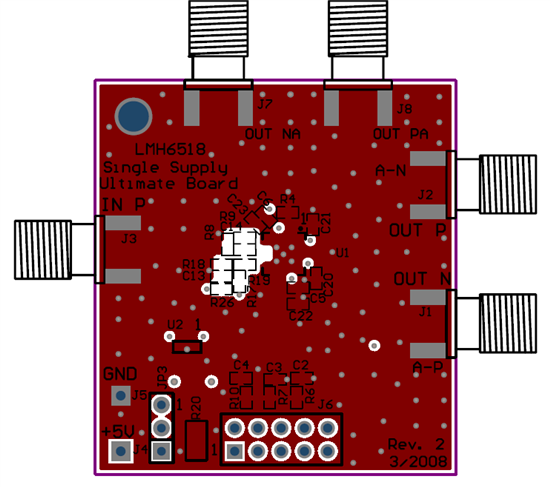I have created an analog test board for our current project, which uses an LMH6518 as setup in the reference design in the datasheet (Figures 6,12,13,15).
At the moment when power is applied to the IC, the device's temperature rises rapidly to stabilise at ~68 degrees C (ambient 28 degrees C), in the default state (aux output on). Note that the device is not heatsinked, and is attached to the top of a 2 layer PCB.
This seems to be quite warm for the device when idling, is this the sort of temperature you would expect from it (assuming datasheet power consumption of 1.1W)?
When I attempt to initiate communications with the LMH6518 via the SPI interface, as soon as /CS is taken low, the device starts attempting to draw large quantities of current along the SDIO line. If I deliberately limit the current it can draw from the master on the SDIO line, the LMH6518 starts increasing in temperature gradually. When the current is not limited (tie SDIO directly to the 3V3 rail), the device rapidly increases in temperature (takes less than 1 second to reach 80 degrees C), and continues to increase until I remove power.
I have inspected the board, and have confirmed that there are no shorts between the device pads as measured at the outside of the device, that the device is soldered in the correct orientation, and that the board schematics match the reference design schematics.
Does anyone have any ideas regarding why the LMH6518 appears to be attempting to draw large quantities of current via the SPI interface?
Thanks.


